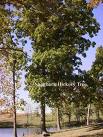Carya Ovata Tree Information
Images of Carya Ovata:






Carya Ovata grows in the following 36 states and provinces:
Alabama, Arkansas, Colorado, Connecticut, Delaware, Georgia, Illinois, Indiana, Iowa, Kansas, Kentucky, Louisiana, Maine, Maryland, Massachusetts, Michigan, Minnesota, Mississippi, Missouri, Nebraska, New Hampshire, New Jersey, New York, North Carolina, Oklahoma, Ontario, Oregon, Pennsylvania, Rhode Island, South Carolina, Tennessee, Texas, Vermont, Virginia, West Virginia, WisconsinInformation about Carya Ovata:
The Carya Ovata is commonly known as the Scalybark Hickory, Shagbark Hickory as well as Shellbark Hickory.
The currently accepted scientific name of shagbark hickory is Carya ovata (P. Mill.) K. Koch . It is a member of the walnut family, Juglandaceae . Two varieties are commonly recognized : Carya ovata var. ovata (Miller) K. Koch Carya ovata var. australis (Ashe) Little At least five other varieties, including C. o. var. fraxinifilia Sarg., C. o. var. nuttallii Sarg., and C. o. var. pubescens, were formerly recognized by many authorities . However, although occasionally encountered in the literature, they are no longer recognized by most taxonomists. Shagbark hickory hybridizes naturally with butternut hickory (C. cordiformis), pecan (C. illinoensis), and shellbark hickory (C. laciniosa) . Common hybrid products and their derivatives follow : Dunbar hickory C. X dunbarii (C. laciniosa x C. ovata) Laney hickory C. X laneyi Sarg. (C. cordiformis x C. ovata) Horticultural hybrids between shagbark hickory and butternut hickory, pecan, shellbark hickory, and mockernut hickory (C. tomentosa) have also been reported .Shagbark hickory occurs throughout most of the eastern North America but is largely absent from the southeastern and Gulf coastal plains and the lower Mississippi Delta. It is found from southeastern Nebraska and southeastern Minnesota eastward through southern Ontario and Quebec to Maine and extends southward to Georgia, Alabama, Mississippi, Louisiana, and eastern Texas . Disjunct populations have been reported in the mountains of northeastern Mexico . The variety ovata encompasses most of the species' range and grows westward to southeastern Missouri and eastward to Louisiana. The variety australis occurs in southeastern North America .In certain floodplain communities, shagbark hickory grows as a codominant with black oak (Quercus velutinus), green ash (Fraxinus pennsylvanica), and northern red oak (Quercus rubra). Shagbark hickory is included as a codominant or indicator in the following community type (cts) and plant association (pas) classifications: Area Classification Authority IL general veg., cts Thomson and Anderson 1976 NE general veg., cts Aikman 1926 NE, KS general veg., cts Weaver 1960 NE, KS general veg., cts Weaver and Albertson 1945 OH general veg., cts Hamilton and Limbird 1982 sw OH general veg., pas Braun 1936Some of the information provided here is attributed to:Tirmenstein, D. A. 1991. Carya ovata. In: Fire Effects Information System, [Online]. U.S. Department of Agriculture, Forest Service, Rocky Mountain Research Station, Fire Sciences Laboratory (Producer). , available at the USDA Fire Effects Information System (FEIS) website